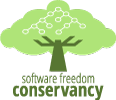Pinterest's journey from VMs to containers in the public cloud
Who is this presentation for?
- Software engineers, DevOps engineers, CIOs, and architects
Prerequisite knowledge
- A basic understanding of containers and public cloud concepts (IAM, security groups, networking, etc.)
What you'll learn
- Explore Pinterest's evaluation framework
- Learn the steps involved in moving from VMs to containers in a public cloud environment
- Explore specific design decisions Pinterest made to accommodate use cases such as long-running stateless services, batch, and stateful services
Description
Pinterest helps you discover and do what you love. Pinterest’s infrastructure is built to cater to its scale—over 150M MAUs across the globe contributing and combing through a billion pins—which has very unique requirements. Micheal Benedict explains how Pinterest, a company operating on VMs in the public cloud since its inception, made a move to containers.
Topics include:
- Pinterest’s infrastructure (offline compute, online serving)
- VMs versus containers, with regard to developer velocity, service reliability, infrastructure governance, and efficiency
- Moving to containers, using Docker
- Pinterest’s compute platform

Micheal Benedict
Micheal Benedict leads product management for Pinterest’s cloud and data processing infrastructure, where he and his team are building a multitenant compute infrastructure to support Pinterest’s growing set of diverse workloads. He also manages the cloud capacity planning and the infrastructure governance teams. Previously, Micheal led products for Twitter Cloud Platform, building next-generation compute services that span internal and public clouds, and built the systems that powered Twitter’s observability and monitoring stack. Micheal holds a master’s degree in computer science from the State University of New York at Buffalo.
Sponsorship Opportunities
For exhibition and sponsorship opportunities, email oscon@oreilly.com
Partner Opportunities
For information on trade opportunities with O'Reilly conferences, email partners@oreilly.com
Contact Us
View a complete list of OSCON contacts
©2018, O'Reilly Media, Inc. • (800) 889-8969 or (707) 827-7019 • Monday-Friday 7:30am-5pm PT • All trademarks and registered trademarks appearing on oreilly.com are the property of their respective owners. • confreg@oreilly.com




























